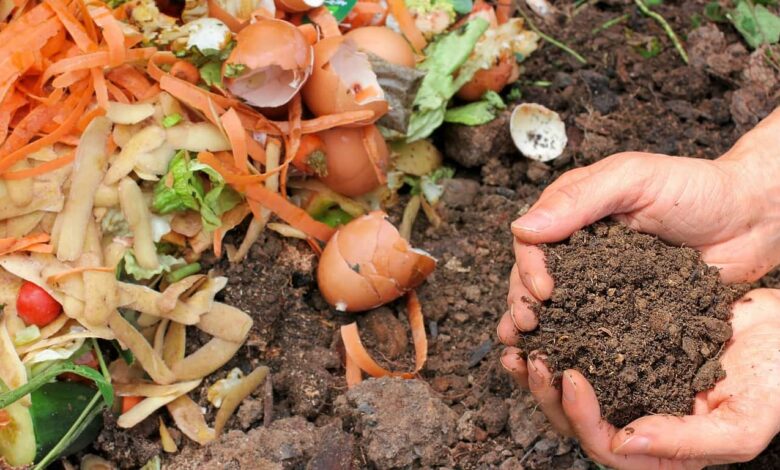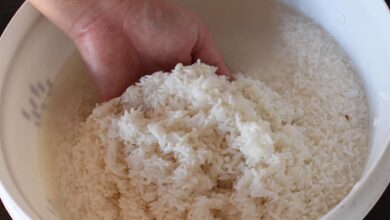How to Make Homemade Fertilizer for Cilantro: 15 Natural and Organic DIY Recipes

Hello herb gardeners, we are back with excellent information on how to make homemade fertilizer for cilantro (coriander) with 15 natural and organic DIY recipes. Using kitchen waste to make organic DIY fertilizer ensures that cilantro grows vigorously in pots, containers, or backyard plants, and its vivid leaves and powerful flavor complement a broad range of recipes. An eco-conscious and economical method of feeding plants is to recycle waste materials such as coffee grounds, banana peels, and cracked eggshells. In addition to reducing harmful environmental impacts, this strategy supplies nitrogen, phosphorus, and potassium to cilantro plants grown indoors, on balconies in apartments, or in raised beds. Patios and terrace plots are only two of the many places where gardeners can grow attractive herbs with only a few inexpensive supplies. For minimal effort and expense, this article provides a 15-step process for making and using a homemade natural fertilizer solution for cilantro. This procedure will promote healthy growth in a range of conditions.
To make your own liquid cilantro fertilizer, start by collecting food scraps. Rooftop containers are perfect for producing cilantro because organic waste, such as fruit and vegetable peelings, worm castings, and other food scraps, breaks down into nutrient-rich compost. These materials are easily accessible, making the process easy even for those with no prior experience. To grow healthy plants and bring forth their full taste without resorting to synthetic chemicals, try this DIY cilantro fertilizer recipe created from food scraps. Regardless of the size of your garden or apartment balcony, these fertilizers will meet the needs of cilantro and ensure continuous growth and yield.
The eco-friendly approach uses compost tea or rabbit dung to make organic fertilizer from cilantro, cutting down on waste. This all-inclusive guide will help gardeners create unique fertilizer blends for their containers and raised beds. If you want to cultivate cilantro in an eco-friendly way, here are some tips for your backyard plot or terrace garden. To guarantee that your magnificent herbs get the best advantage from your compost, this blog post gives detailed instructions for turning household waste into high-quality fertilizers.
Boost Your Cilantro Naturally with 15 Homemade Organic Fertilizer Recipes
Collect Scraps for Cilantro in Pots
You can make a nutrient-rich cilantro fertilizer at home by collecting things like vegetable peelings, broken eggshells, and water from banana peels. You can turn your vegetable scraps into fertilizer for your potted plants by storing them in a compost bin. The method works well for carrots, celery, and spinach. The potassium in banana peels promotes healthy growth, while the calcium in eggshells helps to fortify stems and forestalls stunted development. This method promotes eco-friendly cilantro growing on balconies or patios by recycling waste, which in turn decreases the quantity of trash sent to landfills. It is perfect for city gardeners who are short on space because it provides an easy way to improve plant health.
After washing them well to remove any residue, dry them in an oven at 200°F for 10 minutes, and then grind them coarsely in a mortar or blender. To enhance the release of nutrients during decomposition, combine with fermented vegetable peelings. Soaking banana peels in water for 48 hours can extract potassium, making them a liquid fertilizer for cilantro. The recipe is perfect for small apartment gardens. Place the bone on a compost pile with sufficient ventilation to prevent odors from escaping. The combination should be applied to cilantro plants in containers or raised beds every two weeks. To maintain continuous nutrition intake and healthy development in patio setups, water thoroughly.

This method is great for both amateurs and experts in the gardening world because it requires only a few common tools and materials. Regular compost turning promotes uniform decomposition, leading to a balanced organic fertilizer for cilantro grown in the garden. If you’re growing cilantro on top of a building, this fertilizer will keep the leaves healthy and beautiful. You can produce healthy cilantro in backyard plots or pots by reusing kitchen waste, which makes gardening affordable and environmentally friendly. If you want your plants to thrive in your terrace garden without putting in any work at all, try adding compost tea for extra microbes to the soil.
| Materials | Nutrients | Application Frequency |
|---|---|---|
| Vegetable Peelings | Nitrogen, Phosphorus | Every 2 weeks |
| Eggshells | Calcium | Every 2 weeks |
| Banana Peels | Potassium | Every 2 weeks |
Brew Compost Tea for Cilantro in Containers
An excellent homemade liquid fertilizer for cilantro plants, compost tea supplies nutrients straight to the roots. Combine one shovelful of aged compost that has been amended with rabbit dung or worm castings with one tablespoon of molasses in a bucket of water. Garlic, when grown in containers on rooftops, thrives in this nutrient-rich liquid. Allow it to steep for a minimum of two days, occasionally stirring it to evenly distribute the oxygen. This method encourages quick development and enhances flavor, making it perfect for terrace or balcony gardens that are seeking sustainable alternatives that don’t depend on commercial things.
You can use a fine mesh strainer or a cloth to remove any particles from the tea before diluting it with water at a ratio of 1:10. The homemade fertilizer can help maintain immature cilantro plants. When tending cilantro plants in patio gardens, you can use a spray bottle or simply pour the fertilizer around the plants’ bases. Cilantro planted outside in raised beds benefits greatly from this method, which allows growing a sufficient nitrogen supply despite space constraints. For optimal plant growth and soil fertility, apply every two weeks to garden plots. All gardeners can do it because it is easy and requires few materials.
Compost tea, an organic, do-it-yourself fertilizer ideal for cilantro, has microbial activity that improves soil health and encourages a healthy environment. Cilantro thrives in terrace gardens; for added nitrogen, try adding alfalfa meal. Feeding cilantro grown on a balcony in this way is both cost-effective and waste-reducing. Using eco-friendly methods, gardeners can cultivate delicious herbs in containers or raised beds. If you want to grow cilantro outdoors in a way that doesn’t harm the environment and still produces high-quality leaves, try adding broken eggshells to your soil.
| Ingredients | Quantity | Steeping Time | Dilution Ratio | Application Frequency |
|---|---|---|---|---|
| Aged Compost | 1 shovelful | 2 days | 1:10 | Every 2 weeks |
| Molasses | 1 tbsp | 2 days | 1:10 | Every 2 weeks |
| Rabbit Dung/Worm Castings | Optional | 2 days | 1:10 | Every 2 weeks |
Crush Eggshells for Cilantro in Indoor Pots
Crushed eggshells form the basis of DIY cilantro fertilizer, thanks to their high calcium content. Save the shells after each use, rinse them thoroughly to remove any residue, and bake them at 200°F for 10 minutes to prevent mold growth. For a calcium-rich addition to cilantro stems in indoor or outdoor pots, grind the leaves into a fine powder using a mortar and pestle or mixer. If you’re an urban gardener and you want to grow cilantro on your balcony without using any artificial inputs, mix coffee grounds or vegetable scraps with cilantro to form a balanced fertilizer.
One cup of eggshell powder for every square foot of soil or compost is the recommended amount for raised beds or outdoor gardening. Soak crushed eggshells in water for seven days and shake them daily to release calcium; this process will generate your liquid cilantro fertilizer. You should strain and dilute it before applying it to cilantro in container plantings. This odorless technique is perfect for little apartment gardens since it prevents overfertilization and provides a steady supply of nitrogen. For cilantro that is cultivated outdoors in garden plots, it is recommended to apply calcium boosts once a week to keep the soil healthy.

By reducing its influence on the environment, recycling kitchen waste is an environmentally beneficial practice. To create a nutrient-diverse patio planter, mix eggshells with compost tea or water made from banana peels. Broken eggshells can be used year-round if stored in an airtight container. Growing cilantro in raised beds or containers with this combination is both economical and environmentally conscious. Enhancing cilantro flavor while keeping ecologically benign and broadly accessible growing practices, this methodology ensures robust stems and beautiful leaves for rooftop gardens.
| Materials | Preparation | Nutrients | Application Frequency |
|---|---|---|---|
| Eggshells | Bake at 200°F for 10 min, grind | Calcium | Weekly |
| Coffee Grounds | Optional mix | Nitrogen | Weekly |
| Vegetable Scraps | Optional mix | Nitrogen, Phosphorus | Weekly |
Ferment Banana Peels for Cilantro in Rooftop Pots
If you want to produce your own cilantro fertilizer, all you need is some banana peel water and some potassium-rich banana peels. After chopping three bananas, soak their peels in one quart of water for at least two days. By releasing potassium and minerals, cilantro fermented in containers placed on rooftops produces a liquid fertilizer. This nitrogen boost encourages limbs and a robust flavor, making it an excellent organic DIY cilantro fertilizer for terrace or balcony crops. Gardeners who are short on space or money could use this simple technique.
To avoid harming the delicate roots, sift the mixture and mix it with water in an equal proportion. For cilantro plants grown in containers or raised beds, apply to soil every 10 days. By adding broken eggshells or coffee grounds to patio-grown cilantro, you can enhance its nutritional profile. This method ensures healthy development in limited spaces, such as apartment balconies, by optimizing the nutrient supply. Plants are not overburdened, and expensive equipment is not required.
In addition to enhancing soil quality and decreasing waste, fermenting banana peels promotes the use of organic, homegrown cilantro fertilizer. Stored in an airtight container, the liquid is perfect for homegrown cilantro and keeps for up to 30 days. With this eco-friendly method, you may grow healthy herbs in containers or on a terrace without resorting to harmful commercial products. This combination is a great option for urban gardeners who want to grow cilantro without harming the environment. To make it even more nutritious, you may add compost tea.
| Materials | Quantity | Steeping Time | Dilution Ratio | Application Frequency |
|---|---|---|---|---|
| Banana Peels | 3 peels | 2 days | 1:1 | Every 10 days |
| Eggshells | Optional | – | – | Every 10 days |
| Coffee Grounds | Optional | – | – | Every 10 days |
Coffee Grounds for Cilantro in Backyard Beds
You can make your own cilantro fertilizer using used coffee grounds, which are a fantastic source of nitrogen. Gather and dry the grounds from your daily brews to prevent mold growth, then sprinkle them over the cilantro in your raised garden beds. Since nitrogen promotes the growth of greenery, it is perfect for cultivating cilantro in indoor pots. You may produce a balanced fertilizer by mixing crushed eggshells or vegetable scraps with cilantro to keep it alive on a patio or terrace. In many contexts, this waste-recycling technique offers a low-cost method of nitrogen delivery to plants.
To the top inch of soil in containers or raised beds, add a little bit of dirt. By steeping coffee grounds in water for 24 hours, straining the mixture, and applying it to balcony gardens once weekly, you may make your own liquid cilantro fertilizer. The continual fertilizer release it delivers without scorching the plants makes it ideal for growing cilantro outdoors. Rooftop gardens can benefit from cilantro’s varied nutritional profile and the potassium it provides when mixed with water from banana peels.

Encourage the usage of homemade organic fertilizer for cilantro crops in backyards with this eco-friendly technique. The dried grounds are simple to use and store in a jar, making them perfect for patio or terrace gardening. Frequent spraying maintains soil fertility and fosters lush plant growth in containers or raised beds. This method takes advantage of common household items to grow a thriving herb garden, and it also guarantees quick access to fresh cilantro for outdoor gardens.
| Materials | Nutrients | Application Frequency |
|---|---|---|
| Coffee Grounds | Nitrogen | Weekly |
| Eggshells | Calcium | Weekly |
| Vegetable Scraps | Nitrogen, Phosphorus | Weekly |
Steep Nettle Tea for Cilantro in Terrace Pots
Make zastos
Make your own nutrient-rich liquid fertilizer for cilantro plants in patio containers by combining nettle leaves. When gathering fresh nettles, be sure to wear gloves. Soak a handful in a gallon of water for a week. Since this steeping process removes nitrogen and nutrients, it is ideal for cilantro cultivated in balcony containers. Rooftop cilantro gardens can benefit from the addition of molasses, which increases microbial activity and nutrient availability. Using this method, urban gardeners can increase their nutritional content over time.
Strain the tea and mix it with water in a 1:5 ratio to prevent the plants from becoming overwhelmed. Use the mixture as a foliar spray on patio gardens or sprinkle it on the dirt surrounding cilantro plants in pots or raised beds every two weeks. If you’re growing cilantro in your backyard, this approach is the best way to make sure you have enough fertilizer. Making inexpensive fertilizer for terraces from wild plants is an effortless operation.
Nettle tea is a great organic cilantro fertilizer since it improves soil health by stimulating more microbial activity. When combined with crushed eggshells, it provides a calcium boost and is ideal for producing cilantro in urban or other constrained spaces. In raised beds or containers, this eco-friendly technique encourages lush growth, which lessens waste and supplies nutrients for balcony-grown cilantro. This method produces lovely herbs for outdoor gardens without harming the environment, making it a flexible option for sustainable gardening.
| Ingredients | Quantity | Steeping Time | Dilution Ratio | Application Frequency |
|---|---|---|---|---|
| Nettle Leaves | 1 handful | 7 days | 1:5 | Every 2 weeks |
| Molasses | Optional | 7 days | 1:5 | Every 2 weeks |
| Eggshells | Optional | – | – | Every 2 weeks |
Compost Rabbit Manure for Cilantro in Outdoor Beds
Due to its high nitrogen content, rabbit manure is a great organic fertilizer to use while growing cilantro in your garden. Gathering new manure and composting it for six to eight weeks will decompose ammonia. To make a balanced fertilizer, combine cilantro with vegetable scraps or leaf mold. This technique will be useful for cilantro planted in raised beds or backyard gardens. Patios and outdoor plots that want long-term nourishment will benefit greatly from this nutrient-dense blend, which encourages flavor and lush growth.

To prevent the stems from touching To prevent the stems from touching the cilantro, cover the plants with a thin layer of decomposed manure in pots or outdoor beds. Water the cilantro deeply to ensure it absorbs the nutrients and thrives on a balcony. Reapply every three weeks to maintain the productivity of rooftop gardens. If you want to make your own cilantro fertilizer from rabbit excrement, this method suggests using containers with little impact.
Improve the flavor of cilantro grown in urban garden plots by adding compost tea and beneficial bacteria. An eco-friendly alternative to buying herbs from the shop is to cultivate your own in raised beds or backyard plots. Always keep composted manure in a dry place. Because it provides constant nutrients for healthy plants, this mix is a cost-effective option for cilantro planted outside on a patio or balcony.
| Materials | Nutrients | Composting Time | Application Frequency |
|---|---|---|---|
| Rabbit Manure | Nitrogen | 6-8 weeks | Every 3 weeks |
| Vegetable Scraps | Nitrogen, Phosphorus | 6-8 weeks | Every 3 weeks |
| Leaf Mold | Organic Matter | 6-8 weeks | Every 3 weeks |
Blend Fish Emulsion for Cilantro in Patio Containers
Due to its high nitrogen and trace element content, fish emulsion makes for a wonderful cilantro fertilizer that you can make yourself. Put the fish bones, water, and tablespoon of molasses in a tightly covered container and let it ferment for a week. This nutrient-rich liquid will help cilantro grown in patio pots produce intense flavor and beautiful leaves. If you’re searching for an organic fertilizer to grow cilantro in your garden on a balcony or terrace, this recipe is the perfect solution.
Water should be added to the emulsion in a 1:20 ratio to prevent scorching the roots. Applying fertilizer every two weeks will ensure an even distribution of cilantro in pots or raised beds. Broken eggshells, a source of calcium, can be used to enrich cilantro plants grown on rooftops. Strong growth in confined spaces, such as residential balconies, is supported by this method because nutrients are distributed efficiently.
Fermenting fish scraps with fish emulsion is a sustainable way to make your own cilantro fertilizer. This is because it recycles waste. For optimal results when cultivating cilantro in outdoor garden plots, store the liquid in a cool, well-sealed container for a period of up to one month. This method is perfect for patio or container gardens since it ensures healthy herb growth with minimal effort and regular feeding, all without the use of commercial products.
| Ingredients | Quantity | Fermentation Time | Dilution Ratio | Application Frequency |
|---|---|---|---|---|
| Fish Bones | Variable | 7 days | 1:20 | Every 2 weeks |
| Molasses | 1 tbsp | 7 days | 1:20 | Every 2 weeks |
| Eggshells | Optional | – | – | Every 2 weeks |
Cilantro plants benefit greatly from seaweed extract, a DIY fertilizer known for its high mineral content. After drying the seaweed, soak it in water for at least 48 hours, agitating it occasionally, to extract potassium and trace minerals. Rooftop cilantro plants benefit from this liquid fertilizer’s increased growth and flavor. Are you looking for an organic, low-impact cilantro fertilizer? This mixture is the perfect solution for plants on terraces or balconies.
Dilute the filtered extract with water to a ratio of 1:10. Apply the solution to the soil around cilantro plants in raised beds or pots once every ten days, or use it as a foliar spray in patio gardens. This strategy guarantees that cilantro grown outdoors in garden plots will have an appropriate quantity of fertilizer. If you’re growing cilantro in a tiny apartment, you can add coffee grounds for extra nitrogen.
Incorporating natural elements, this eco-friendly method enhances the DIY cilantro fertilizer recipe with seaweed. For optimal use on the patio, store the extract in an airtight container for up to one month. This approach keeps herbs in excellent health by growing them in outdoor gardens in an eco-friendly way, which results in affordable, abundant cilantro. It’s also a wonderful option for growing in containers or on raised beds.
| Ingredients | Steeping Time | Dilution Ratio | Application Frequency |
|---|---|---|---|
| Seaweed | 48 hours | 1:10 | Every 10 days |
| Coffee Grounds | – | – | Every 10 days |
Alfalfa Meal for Cilantro in Backyard Containers
The high nitrogen and trace mineral content of alfalfa meal makes it an excellent ingredient in homemade cilantro fertilizer. Combine one cup of alfalfa meal with one cup of compost or dirt to make a fertilizer that is rich in nutrients, perfect for cilantro plants that are planted in pots in backyard gardens. Because it encourages lush growth, this combination is ideal for terrace or patio installations. To make balcony-grown cilantro even more nutritious, add crushed eggshells or vegetable scraps.
Before planting cilantro in pots or raised beds, mix the ingredients and sprinkle them on top of the top inch of dirt. Thoroughly water cilantro plants grown outdoors on a rooftop to incorporate nutrients. To maintain fertility in little apartment gardens, apply fertilizer every three weeks. This method guarantees steady nitrogen delivery without overwhelming plants, making it ideal for city gardeners.

This eco-friendly technique helps produce organic fertilizer for backyard cilantro patches by recycling organic waste. Alfalfa meal is a cost-effective solution for terrace gardens due to its ability to store well in a dry container and its year-round use. If you want to grow cilantro outdoors with little damage to the environment and lots of flavor, try mixing it with compost tea. It will help the microbes.
| Ingredients | Quantity | Nutrients | Application Frequency |
|---|---|---|---|
| Alfalfa Meal | 1 cup | Nitrogen, Trace Minerals | Every 3 weeks |
| Compost/Soil | 1 cup | Organic Matter | Every 3 weeks |
| Eggshells | Optional | Calcium | Every 3 weeks |
| Vegetable Scraps | Optional | Nitrogen, Phosphorus | Every 3 weeks |
Ferment Fruit Scraps for Cilantro in Terrace Pots
Make your own nutrient-dense liquid fertilizer for cilantro with fermented fruit waste. Put a teaspoon of molasses in a basin of water and let the cores and peels of fruits like oranges, bananas, and apples soak for two weeks. Coriander thrives in terraced pots when grown using this method, which releases potassium and vitamins. Patio or balcony gardens looking for an organic fertilizer to cultivate cilantro would benefit from its growth-promoting properties.
After filtering, dilute the liquid with water to a ratio of 1:15 to preserve the roots. If you’re growing cilantro in pots or raised beds outside, spray the soil around the plants every 10 days to ensure even dispersion. As a source of calcium, broken eggshells can be used to enrich cilantro plants grown on rooftops. This method is excellent at distributing nutrients, so even in small spaces you can grow healthy plants.
To reduce food waste and enhance homemade cilantro fertilizer made from fermented fruit juice, fruit scraps can be fermented. Cilantro grown in garden plots will benefit greatly from the liquid; it keeps for up to a month in a well-sealed jar. This eco-friendly method promotes sustainable gardening practices and reduces consumption of synthetic herbicides, making it ideal for use in container gardens or on terraces.
| Ingredients | Quantity | Fermentation Time | Dilution Ratio | Application Frequency |
|---|---|---|---|---|
| Fruit Scraps | Variable | 2 weeks | 1:15 | Every 10 days |
| Molasses | 1 tsp | 2 weeks | 1:15 | Every 10 days |
| Eggshells | Optional | – | – | Every 10 days |
Compost Leaf Mold for Cilantro in Outdoor Beds
Because of its high organic content, leaf mold is a great DIY fertilizer for cilantro. Recycle the leaves that have fallen from your yard into a crumbly compost for at least six months and up to a year. If you want your cilantro in raised beds or outdoor gardens to be even more nutritious, mix it with vegetable scraps or rabbit manure. Because it promotes lush growth, this combination is ideal for terrace or patio installations.
Before planting cilantro in containers or raised beds, spread a thin layer of the herb over the soil. If you want your cilantro to grow well on a balcony, be sure to water it well and provide fertilizers. Reapply every three weeks to maintain the productivity of rooftop gardens. This method guarantees consistent nutrient delivery, enabling minimal effort and maximum impact while growing cilantro outdoors.
Using this sustainable approach that repurposes items, you may grow organic fertilizer for your cilantro plants in the comfort of your own backyard. Combine it with compost tea to enhance the microbiological benefits for cilantro grown in urban garden plots. You may grow an abundance of cilantro with an eco-friendly method with leaf mold, which is cheap, simple to store (in a dry place), and can be used all year round in container or terrace gardens.
| Materials | Composting Time | Nutrients | Application Frequency |
|---|---|---|---|
| Leaf Mold | 6-12 months | Organic Matter | Every 3 weeks |
| Vegetable Scraps | 6-12 months | Nitrogen, Phosphorus | Every 3 weeks |
| Rabbit Manure | 6-12 months | Nitrogen | Every 3 weeks |
Bone Meal for Cilantro in Patio Pots
Bone meal is a great DIY fertilizer for cilantro plants due to its high phosphorus concentration. Fertilize cilantro plants in patio pots with a nutrient-dense mixture of one cup of bone meal and either compost or dirt. Ideal for balcony and terrace gardening, this blend encourages root growth. To enhance the nutritional value of cilantro grown outdoors, mix in some coffee grounds or vegetable scraps.
Add the mixture to the soil surrounding the cilantro plants in pots or raised beds. Thoroughly irrigate rooftop crops with cilantro to incorporate nutrients. For small apartment gardens, apply every four weeks to nourish and maintain fertility. This technique guarantees a consistent supply of fertilizers, which is ideal for urban gardeners seeking long-term solutions.

Using homemade organic fertilizer is a great way to encourage cilantro plants in the garden to employ this eco-friendly technique. Bone meal, when stored dry, can save costs on patio installations. If you want to grow cilantro in containers or raised beds while minimizing environmental impact and maintaining flavor, consider adding potassium-rich banana peel water to your outdoor plantings.
| Ingredients | Quantity | Nutrients | Application Frequency |
|---|---|---|---|
| Bone Meal | 1 cup | Phosphorus | Every 4 weeks |
| Compost/Soil | 1 cup | Organic Matter | Every 4 weeks |
| Coffee Grounds | Optional | Nitrogen | Every 4 weeks |
| Vegetable Scraps | Optional | Nitrogen, Phosphorus | Every 4 weeks |
Steep Comfrey Leaves for Cilantro in Rooftop Containers
The potassium- and nitrogen-rich comfrey leaves can be converted into a nutrient-rich liquid fertilizer for cilantro by steeping them in comfrey tea. Fresh comfrey leaves, a handful at a time, soaked in one gallon of water for seven days with periodic stirring. When cultivated in rooftop pots, cilantro plants benefit from this liquid’s ability to promote lush foliage. This mixture is the ideal organic fertilizer for cilantro plants, whether you want to grow them in your backyard or on a balcony.
Dilute the filtered tea with water at a ratio of 1:10. Cilantro cultivated in backyard plots benefits greatly from this strategy, which guarantees an efficient supply of nutrients. Cilantro plants in containers or raised beds should have the solution applied to the soil every two weeks. Patio plants can also be sprayed with the solution. In cramped apartment gardens, the calcium in broken eggshells can be a boon to cilantro.
An eco-friendly way to add comfrey to your homemade cilantro fertilizer recipe is to use wild plants. This tea is perfect for patios because it keeps for up to a month in a sealed container. In this method, vibrant cilantro is grown in pots or raised beds, guaranteeing fresh herbs in an eco-friendly approach while reducing the need for commercial products for outdoor gardening.
| Ingredients | Quantity | Steeping Time | Dilution Ratio | Application Frequency |
|---|---|---|---|---|
| Comfrey Leaves | 1 handful | 7 days | 1:10 | Every 2 weeks |
| Eggshells | Optional | – | – | Every 2 weeks |
Mix Wood Ash for Cilantro in Backyard Beds
Because of its high calcium and potassium Because of its high calcium and potassium content, wood ash serves as an excellent fertilizer for cilantro that you can make at home. Make sure there are no chemical residues when you gather ash from untreated wood fires. Cilantro planted in backyard raised beds needs a mixture of one cup of soil or compost. Because it encourages lush growth, this combination is perfect for terrace or patio installations. To increase the nutritional value of cilantro on a balcony, mix it with leftover vegetables or leaf mold.
Put the cilantro in containers or outside beds so the mixture doesn’t touch it directly. Thoroughly irrigate rooftop crops with cilantro to incorporate nutrients. For small apartment gardens, apply every four weeks to nourish and maintain fertility. This method is excellent for producing cilantro outdoors with little work since it guarantees consistent fertilizer delivery.
Backyard cilantro patches can produce organic fertilizer on their own with the help of this waste-recycling device. Wood ash is cost-effective for outdoor spaces since it can be kept in a dry container and used throughout the year. If you’re an outdoor gardener concerned about sustainability, you may grow vivid, delicious cilantro in containers or raised beds by combining it with compost tea, which offers microbiological benefits.
| Ingredients | Quantity | Nutrients | Application Frequency |
|---|---|---|---|
| Wood Ash | 1 cup | Calcium, Potassium | Every 4 weeks |
| Soil/Compost | 1 cup | Organic Matter | Every 4 weeks |
| Vegetable Scraps | Optional | Nitrogen, Phosphorus | Every 4 weeks |
| Leaf Mold | Optional | Organic Matter | Every 4 weeks |
Conclusion
Making your own organic cilantro fertilizer from food scraps is a wonderful way to turn gardening into a greener, more fulfilling pastime. By repurposing things like smashed eggshells, banana peels, coffee grounds, and worm castings, you may create nutrient-rich mixes that cilantro grown in garden raised beds, pots, or containers can benefit from. In addition to supplying vital nutrients like potassium, phosphorus, and nitrogen, these processes guarantee verdant foliage and robust flavor while decreasing expenses and waste. Due to the versatility of cilantro and its nutrients, it can be cultivated in every climate, making it an ideal crop for urban and rural gardeners alike.




